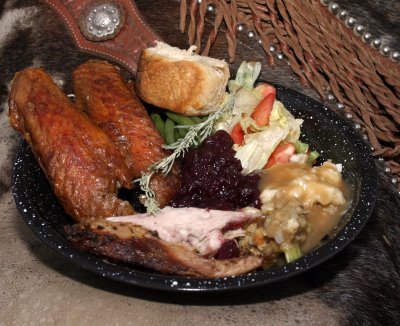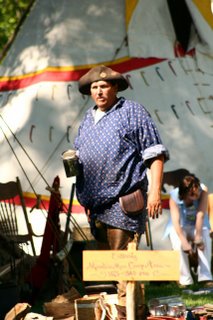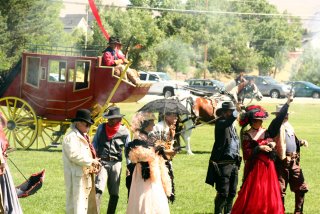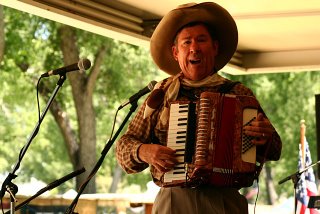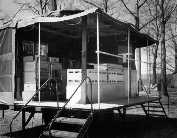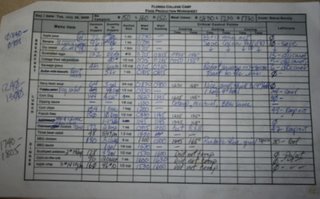RENO, Nev.--April 15, 2006--Remember when you were a kid and you would look out your front window, daydreaming of being the CEO of a major mega-conglomerate corporation? Of course not! Like most kids you dreamed of being a cowgirl or cowboy, riding your pony through the sagebrush, herding your cattle to town. But reality happens and somehow this dream alluded you.
Dreams come true every June at the annual Reno Rodeo Cattle Drive, presented by Signature Landscapes. A group of 49 adults from all over the United States gather north of Reno and drive cattle across the foothills of the Sierra Nevada through Reno into the rodeo grounds.
"It’s an amazing experience," says Trevor Riches of Oregon. Riches, a transplanted Welshman, always dreamed of being a cowboy. Two years ago he was voted by the other guests as the honorary trail boss for a day. "It was fantastic. To be voted by your peers this honor, was incredible." He added, "No matter how much I ride during the year, this is just fabulous. No phone, no electronics, no responsibility more than putting my pants and boots on every day. By the end of the week, I’m relaxed and invigorated!" And he doesn’t miss a year coming on the Drive.
For the past 16 years, "wanna-be" cowboys and cowgirls from around the world have gathered in Reno for this annual event. They’ll feast on gourmet chuck wagon cuisine, consuming over 750 pounds of meat and 100 gallons of cowboy coffee. They’ll sleep out under the stars and ride a sturdy mountain horse over 100 miles during the event, traversing 2,300 acres of Northern Nevada.
The drive is produced by a volunteer committee, spearheaded by Marie Gaspari-Crawford —The first woman trail boss in the event’s history. She is supported by 35 volunteer cowboys, cowgirls, wagon masters and a top chuck wagon crew. "It’s an amazing sight to see, this herd of 300 steers, 75 horses and riders, and 1800’s covered wagons driving through the sagebrush," says Gaspari-Crawford. These volunteers spend their own vacation time to educate the guests about the Western heritage.
Guests pay $1,600.00 for the five day experience which includes their horse, tack, all meals, and an end of the trail banquet and ground transportation. All proceeds generated by the drive go to charities supported by the Reno Rodeo’s charitable arm, the Reno Rodeo Foundation.
The Cattle Drive runs the week before the Rodeo, June 11, through 15, 2006.
The Reno Rodeo which runs June 16 through 25, is one of the top three PRCA (Professional Rodeo Cowboys Assn.) rodeos in the United States. It is an all-volunteer association, with its members dedicated to presenting the "Wildest, Richest Rodeo in the West." Visit the Cattle Drive and Reno Rodeo online at
www.renorodeo.com.




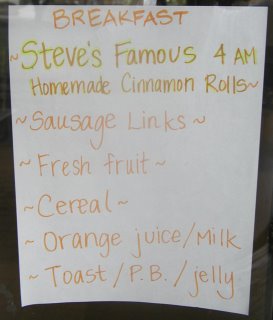


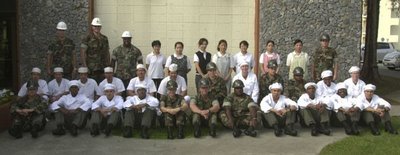

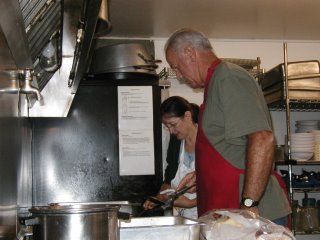

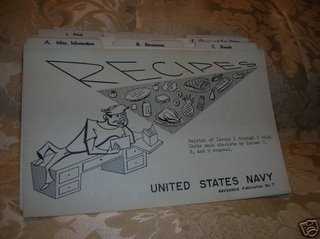
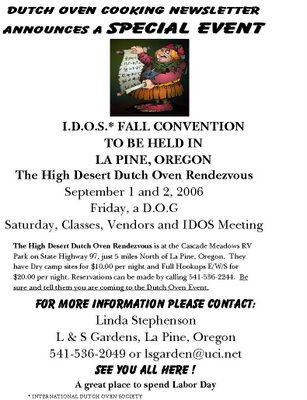
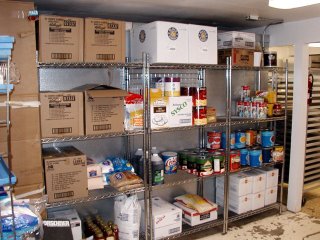






 Season the roast with freshly ground black pepper. Make about 1-dozen slits in the surface of the roast and stuff with fresh garlic cloves.
Season the roast with freshly ground black pepper. Make about 1-dozen slits in the surface of the roast and stuff with fresh garlic cloves.  Pour a 1-inch layer of rock salt into the bottom of a 14-inch deep camp oven. You need two (4-pound) boxes of rock salt for the roast.
Pour a 1-inch layer of rock salt into the bottom of a 14-inch deep camp oven. You need two (4-pound) boxes of rock salt for the roast.



